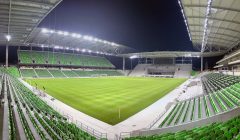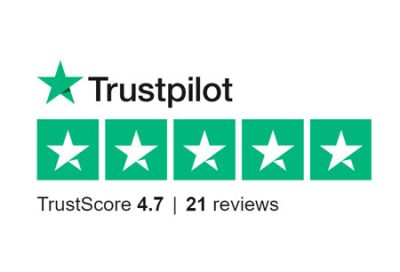Value Engineering (VE) in lighting projects is a method that’s shaking things up in the design and construction world. It is all about analyzing the functions of a project and determining how best to achieve them faster and at less cost without compromising quality. This method has a competitive advantage because it increases the efficiency and general value of lighting installations.
In this article, we will discuss five significant benefits of using VE in lighting projects in order to understand how it works for our benefit.
Table of Contents
Toggle1. Optimized Cost Efficiency
VE serves a primary role in budgeting with high-quality lighting projects. It is an in-depth assessment of different lighting products to enable project managers to to find the best possible alternatives that balance cost and quality. This detailed evaluation results in substantial cost savings on the initial setup while not compromising its functionality or aesthetics.
Such cost savings are significant in large-scale projects, where budget constraints really matter – ensuring that financial resources are utilized judiciously without compromising the project’s vision.
2. Enhanced Lighting Performance and Sustainability
VE approach focuses on more than cost savings; it is about improving the overall efficiency of a lighting system. By selecting energy-efficient lighting options and integrating natural light sources where feasible, VE contributes to the sustainability of the project. The carbon footprint of buildings will decrease with this aspect, which is an increasingly significant one in the context of global environmental concerns.
Furthermore, sustainable lighting options often have longer lifespans and lower maintenance requirements, which are features that a modern construction project will find appealing.
3. Reduced Long-term Operating Costs
Addressing the long-term financial viability of lighting installations is one critical issue VE addresses. It would include a detailed analysis of the lifecycle costs, energy consumption and maintenance cost expenses. Through the use of durable and energy-efficient lighting systems, VE greatly reduces such recurring costs.
This long-term cost-effectiveness is particularly beneficial for commercial and public buildings, where lighting is a major contributor to operational expenses.
4. Flexibility and Customization in Design
VE empowers designers and architects with greater flexibility in crafting lighting solutions that are both innovative and cost-effective. This process encourages exploring a wide range of products and designs, allowing for the customization of lighting systems to meet specific project needs.
This flexibility is crucial in projects with unique architectural features or specific functional requirements, as it allows for the creation of lighting designs that are both aesthetically pleasing and practical.
5. Maximized Return on Investment
Value Engineering in lighting projects is an indispensable strategy that aligns with the contemporary demands of economic efficiency, environmental responsibility, and design flexibility. It ensures that lighting projects are not only visually stunning but also economically viable and ecologically sustainable, making it a key consideration in modern construction and design.
Key Takeawy: Value Engineering or VE in lighting projects is a strategic approach that manages to combine cost efficiency with high quality results. It consists of careful consideration and evaluation regarding the various lighting options available in order to identify best cost effective yet high quality alternatives that not only results into big savings on initial costs but also does not compromise its functional or aesthetic requirement.
Executing Value Engineering Effectively in Lighting Projects
To successfully implement Value Engineering (VE) in lighting projects, companies need to follow an organized structure.

This involves several key steps and considerations that ensure VE is executed effectively, maximizing its benefits:
- Establish Clear Objectives: Before starting VE, it is necessary to define the particular goals and demands that this lighting project must fulfill. This includes the aesthetic, functional, and financial objectives.
- Collaborative Team Effort: VE involves a multidisciplinary team that includes designers, engineers, project managers and stakeholders. This collaboration ensures that all angles and perspectives are covered, which gives more comprehensive and innovative solutions.
- Thorough Market Research: Research thoroughly on what kinds and brands of lighting are available. This is helpful in finding less pricey solutions without sacrificing quality or performance.
- Lifecycle Cost Analysis: Evaluate the long-term costs, such as energy consumption and maintenance replacement in different lighting options. This is an important analysis for the selection of cost-effective options that are long-term in nature.
- Focus on User Experience: Consider the impact of lighting choices on the end-users. Lighting should enhance the space in terms of comfort, productivity, and overall ambiance.
- Incorporate Technological Advancements: Some of the latest lighting technologies that one ought to keep updated on are LED innovations, smart lighting systems and energy-efficient solutions. These technologies can go hand in hand to enhance the value and longevity of the project.
- Quality Assurance: Ensure that the chosen lighting solutions meet all required standards and regulations. Quality should not be sacrificed for cost savings.
- Regular Communication and Feedback: Maintain open lines of communication throughout the VE process. Regular feedback loops with all stakeholders can help in fine-tuning the project as it progresses.
- Flexibility and Openness to Change: Be prepared to make adjustments as the project evolves. Flexibility is key to adapting to unforeseen challenges or new opportunities that may arise.
- Documentation and Analysis: Document all decisions and their rationales during the VE process. This documentation is valuable for future reference and helps analyze the VE strategy’s effectiveness post-project completion.
With these steps in place, VE can be used effectively for lighting projects to ensure the best possible value by balancing cost, quality, functionality, and sustainability. This approach not only results in successful project performance but also establishes the standard for future lighting projects.
Challenges and Best Practices in Value Engineering for Lighting Projects
While Value Engineering (VE) offers numerous benefits in lighting projects, it’s not without its challenges. When not executed properly, VE can lead to issues that might compromise the overall effectiveness and aesthetic of the lighting design.
Common Challenges in Value Engineering
- Differences in Product Specifications: A typical issue arises when substituting products without closely matching specifications. For example, replacing a specified lighting fixture with a cheaper alternative might save costs initially, but if the color temperature or rendering quality differs significantly, it can adversely affect the aesthetics and functionality of the space.
- Overlooking Light Levels: Another common oversight is not maintaining required light levels, especially in outdoor and communal areas like parking lots. Substituting for cheaper fixtures might save upfront costs, but if these do not meet the necessary illumination standards, it can lead to safety concerns and potential rework.
Tips for Effective Value Engineering
- Expertise in Lighting Specifications: Ensure that the team responsible for VE is well-versed in lighting specifications. This knowledge is crucial to avoid surprises related to color temperature and other technical aspects.
- Importance of Light Levels: Recognize the importance of light levels in certain areas. When substituting fixtures, it’s vital to ensure that they meet the required distribution and intensity of light.
- Incorporating Controls: With the increasing demand for smart and automated lighting systems, ensure compatibility of substituted fixtures with existing or planned control systems.
- Adherence to Local Codes: Compliance with local building and safety codes, such as Title 24 and BUG requirements, is essential to avoid regulatory issues and ensure safety.
- Custom-Fixture Quality: When value engineering custom fixtures, assess the impact on the overall design and character of the space. The goal should be to maintain the intended aesthetic and functional quality.
VE, when done right, can significantly enhance the effectiveness of lighting projects. Partnering with experienced professionals like National LED, with their extensive experience in the field, can guide you through the complexities of lighting design and VE, ensuring a successful outcome for your project.








